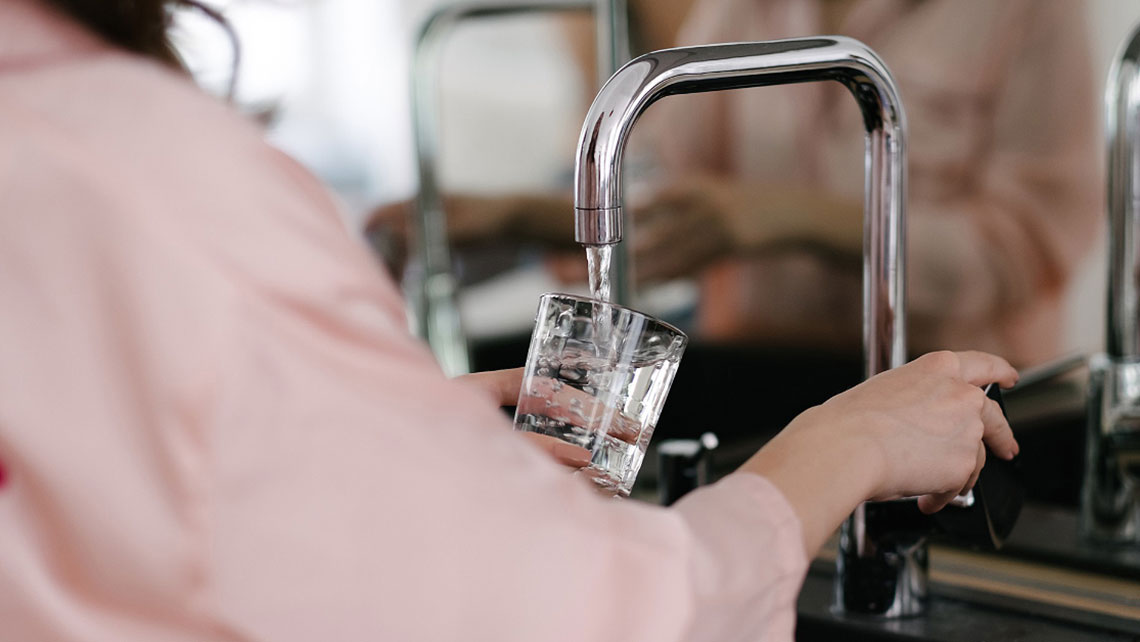The findings are part of an international consumer survey conducted earlier this year by Taloustutkimus on behalf of Kemira. There were nearly 8,000 survey respondents across Europe and the US, including 1,040 Finns. Finns also reported that water is the country’s most valuable natural resource (tied with forests).
The young don’t know how tap water is produced
“As the leading water treatment chemistry experts in Europe, we believe it is important to encourage public discussions around water since it is a valued natural resource in Finland. Many people take clean water for granted, but it requires continuous work to ensure its future availability. Given that water is a limited resource, it is of critical importance that we maintain a healthy water cycle,” says Rasmus Valanko, Director of Sustainability at Kemira.
70% of 18-25 year-olds admitted they do not have a good understanding of how water arrives at their homes, where it comes from, or where their wastewater goes.
Discussion on the value of water
“Delivering high quality drinking water to every Finnish home and handling wastewater safely and efficiently requires a coordinated effort and continuous investment from the responsible municipalities and water treatment authorities. The extent of this work should be better understood by the public in order to appreciate the true value of water. Clean water, a prerequisite for all life, is an important economic and political issue at a time when climate change is causing disruptions, urbanization is increasing capacity pressures, and aging infrastructure requires modernization – while at the same time, taxpayers are reluctant to pay higher water tariffs,” says Vesa Kettunen, Regional Sales Director of EMEA Nordics at Kemira.
The extent of this work should be better understood by the public in order to appreciate the true value of water.
Sixty-eight percent of the survey respondents said household water should not be taxed at a higher rate. Nearly three out of four also think it is the government’s responsibility to ensure clean water supply to Finnish households.
”Based on the survey, the level of trust in the quality of tap water is exceptionally high in Finland, compared to the other countries included in the report. This trust is justifiable. The Finnish Institute for Health and Welfare reported that 99.9% of the compliance monitoring samples collected from the 153 biggest water supply zones in Finland met the high standards set for the safety and quality of drinking water in 2018. This is thanks to the work carried out by water treatment plants, ensuring the supply, treatment and distribution of water. As the owners of the treatment facilities and the organizers of this service, the municipalities are in key role in ensuring the availability of sufficient resources and knowhow in this field now and in the future,” says Riina Liikanen, Senior Adviser from the Finnish Water Utilities Association and Adjunct Professor at the Aalto University.
The water supply, briefly explained:
Potable, or drinking-quality water is produced from surface water, i.e. water from lakes and waterways or ground water, which comes from soil and rock. The production is an industrial process, governed by strict inspection requirements. There are some 100,000 kilometers of water supply piping underground in Finland bringing this water to consumers, and approximately 400 water treatment facilities operated by municipalities.
The wastewater people produce is collected by the sewage network and transported to wastewater treatment plants. The treatment process and plants can have different compositions, but always remove particles, nutrients and other harmful substances from the water under strict regulations, before it can be returned to the recipient water body – like, in the case of Helsinki – the sea. There are some 50,000 kilometers of sewage infrastructure underground in Finland, and some 650 sewage treatment facilities operated by municipalities.
To read more about the survey findings in Finnish, you can download a summary below.
